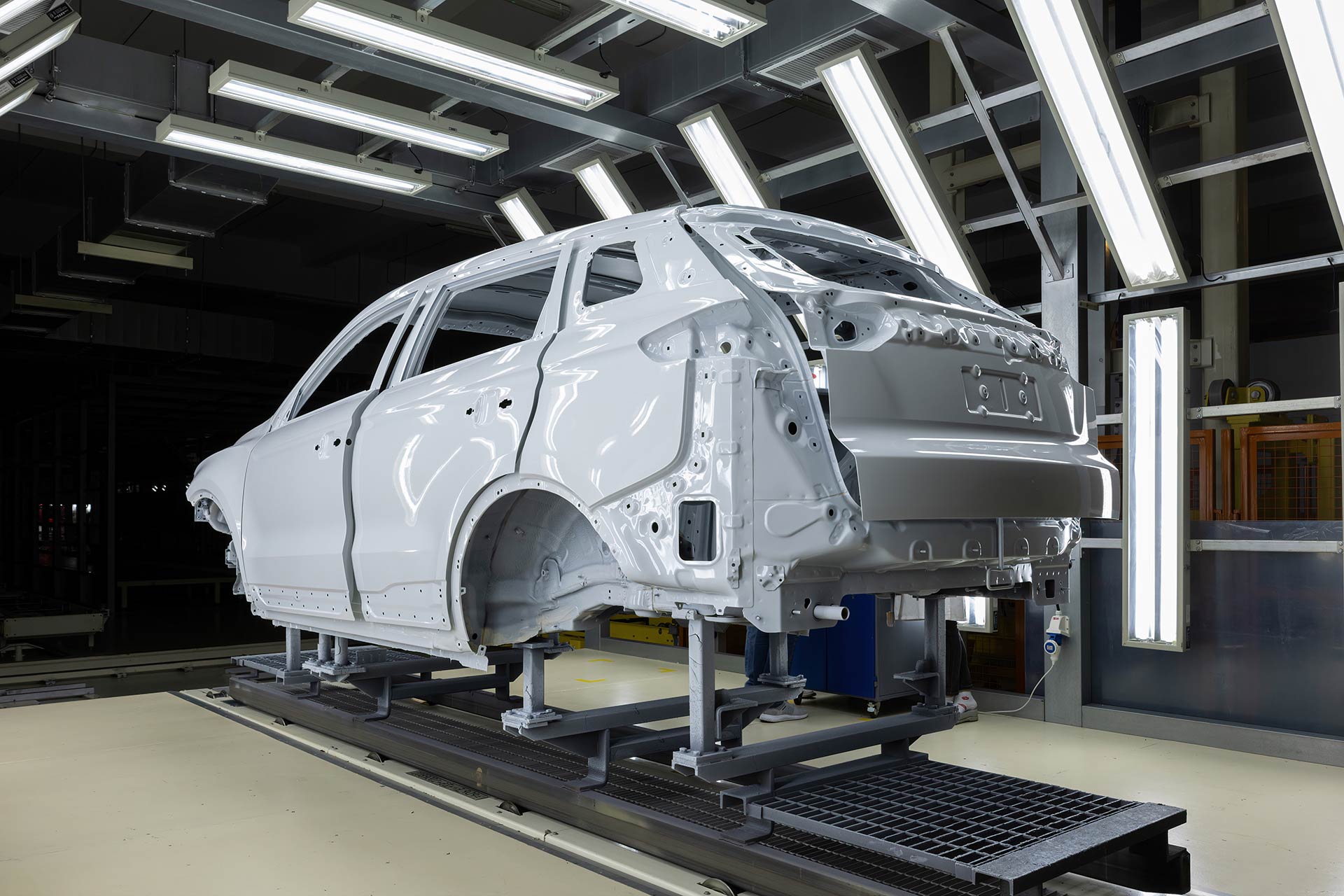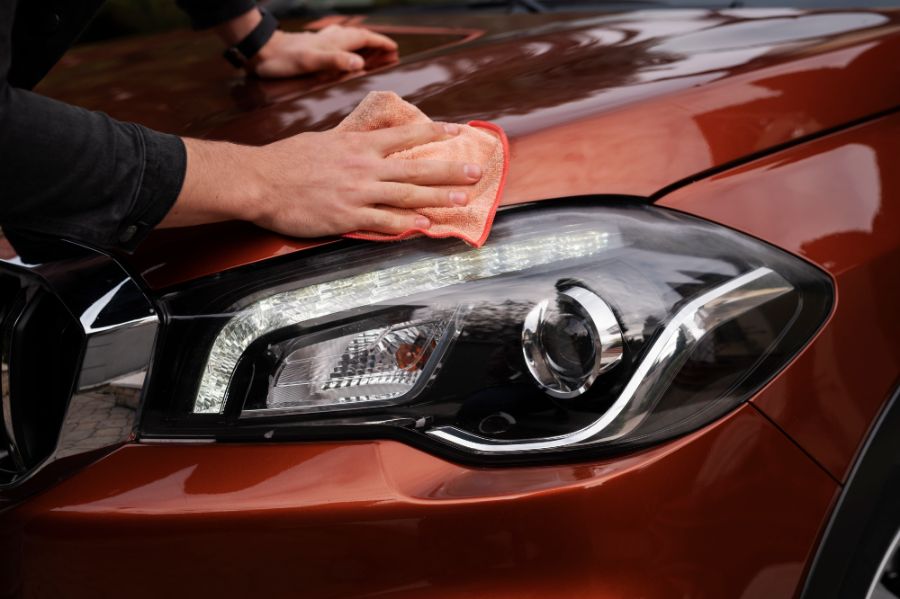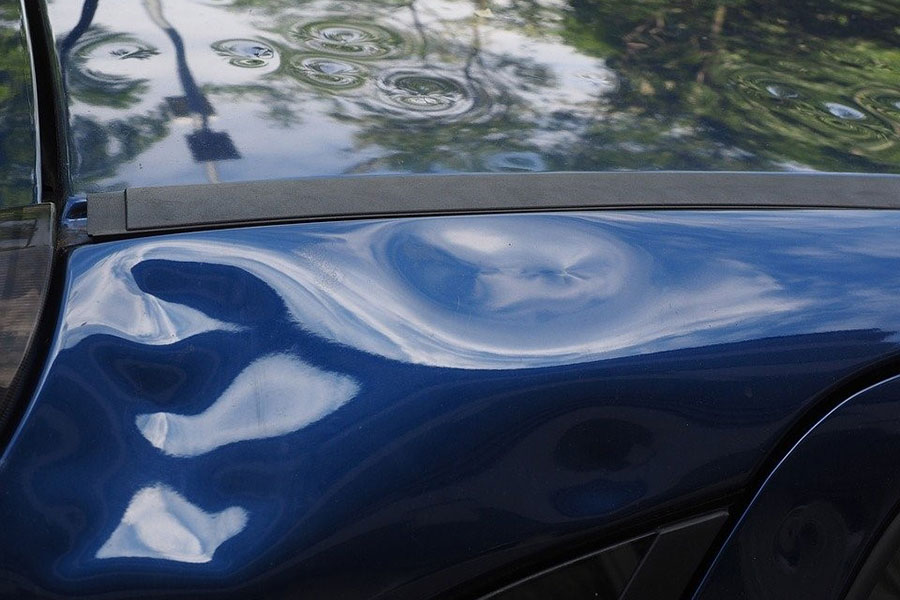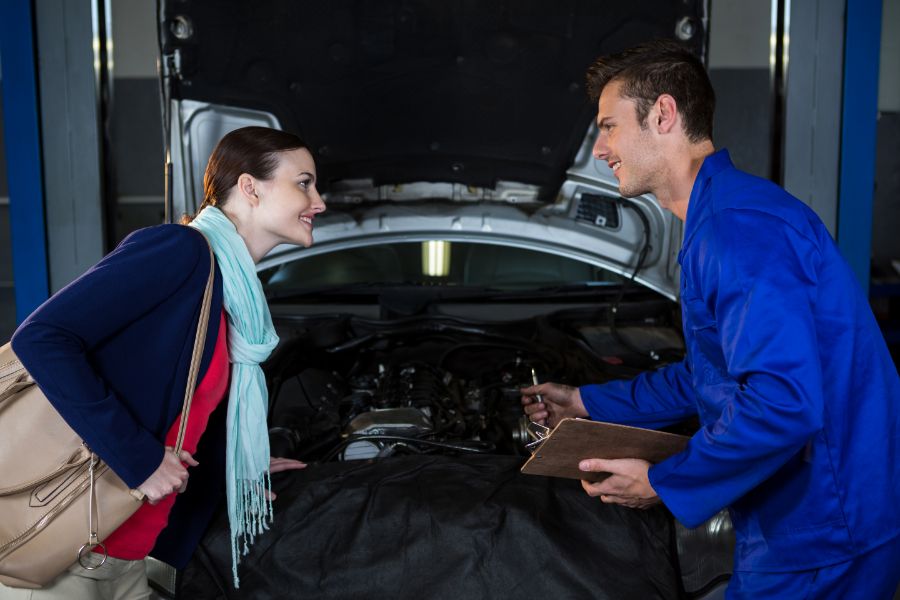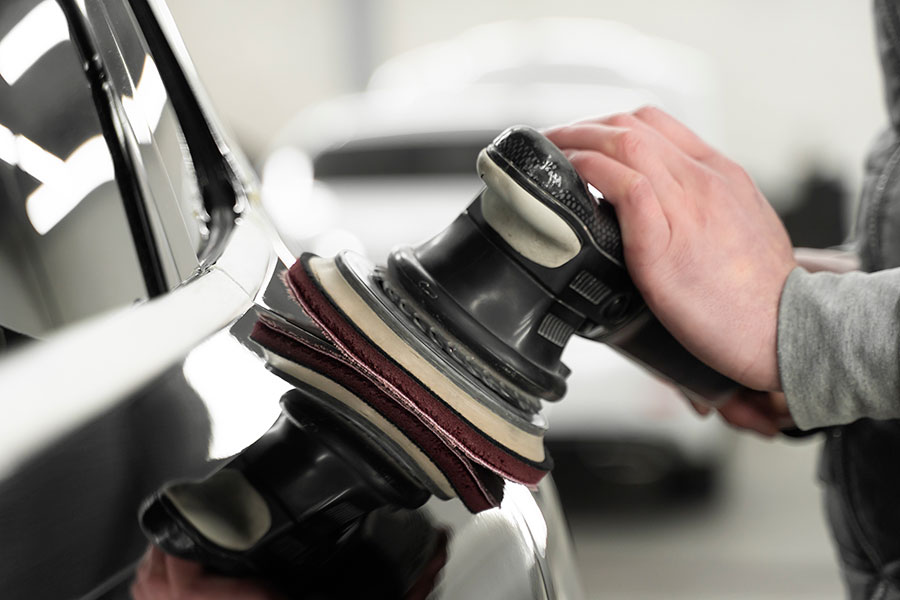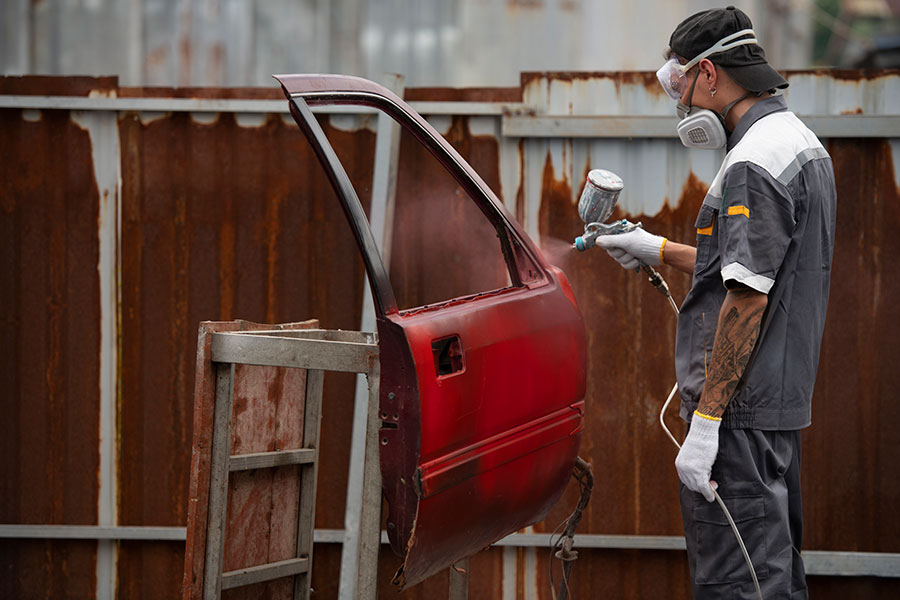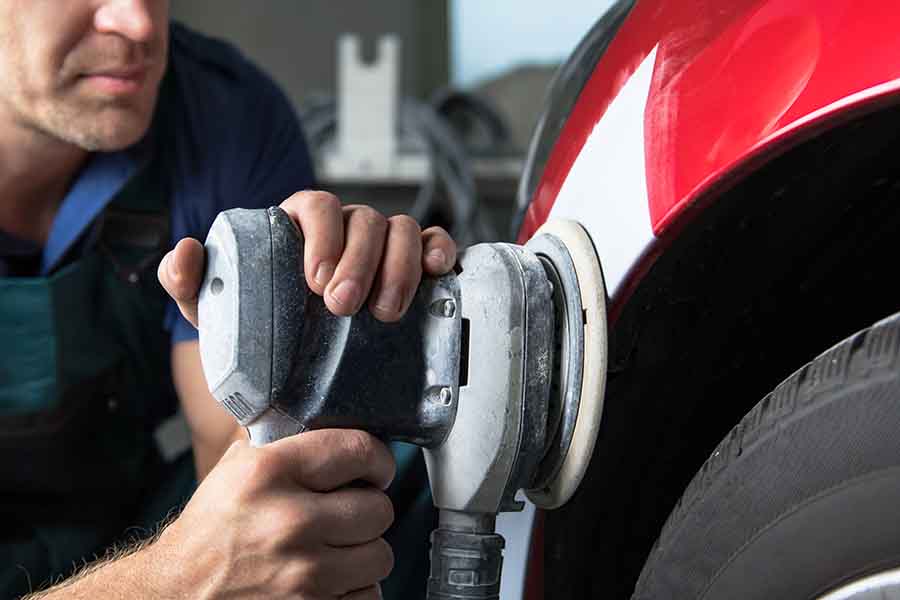Frame damage repair is crucial for maintaining the safety and integrity of your vehicle. Historically, cars were built with rigid frames that, once bent or damaged, were challenging and expensive to fix. Today's advancements in automotive technology have made repairing frame damage more accessible and effective, ensuring vehicles can return to their pre-accident condition. Whether from a minor fender bender or a major collision, addressing frame damage promptly prevents further issues down the road. This post dives into the essentials of frame damage repair, offering insights into how modern techniques restore vehicle safety and performance. Understanding these repairs can save you time and money, keeping your ride smooth and secure.
Exploring Frame Damage
Frame Damage Defined
Frame damage occurs when a vehicle's structural integrity is compromised. This can significantly affect both safety and performance. The frame, essentially the vehicle's backbone, supports the entire load. When it's damaged, everything from handling to fuel efficiency can suffer.
Damage to the frame doesn't just alter how a car drives. It also impacts the effectiveness of safety features. In a collision, a compromised frame may not properly absorb impact, putting passengers at greater risk.
Common Causes
Accidents are the leading cause of frame damage. A severe impact, even at low speeds, can bend or twist the frame beyond repair. It's not always immediately noticeable but can lead to long-term issues if not addressed.
Rust is another culprit, eating away at the metal over time. Older vehicles are especially vulnerable. Rust weakens the structural integrity, leading to potential frame damage without any external force.
Types of Damage
Frame damage manifests in various ways, each affecting the vehicle differently. Bends and cracks are among the most common types encountered.
Bends occur when a force pushes part of the frame out of its original shape. This can lead to misalignment of wheels and uneven tire wear. Cracks, on the other hand, are more serious. They indicate that the metal has not only been deformed but has also begun to break apart. Both conditions necessitate immediate attention to prevent further deterioration.
Identifying Repair Needs
Professional Inspections
Professional inspections are crucial for spotting frame damage that isn't obvious. Experts use their knowledge to find hidden issues. They look at the car's structure closely.
Mechanics have tools that tell them more than what meets the eye. This means they can find problems we can't see. Trusting these experts is important for your car's health.
Visible Signs
There are things you can spot that suggest frame damage. Look for signs like:
- Uneven tire wear
- Doors or windows that don't close right
- Gaps between body panels
These clues show there might be a problem with the frame. If you see these, it's time to get a professional look.
Diagnostic Tools
Diagnostic tools play a big role in understanding frame damage. They give detailed information about the car's condition.
Technicians use these tools to measure how bad the damage is. This helps them plan how to fix it properly. Without these tools, some damage could be missed.
Understanding Repair Basics
Tools Used
Hydraulic presses are a key component in frame repair. They apply the force needed to straighten bent frames back to their original shape. This tool is essential for ensuring a vehicle's frame meets factory specifications.
Technicians also rely on specialized measuring tools. These instruments help them assess the extent of the damage. They ensure repairs align precisely with the vehicle's design.
Straightening Process
Frame straightening is a critical technique in the repair process. It's applicable when a vehicle's frame has been bent or twisted due to an accident. This method involves attaching the vehicle to a frame machine. The machine uses hydraulics and chains to pull the frame back to its original shape.
The process is meticulous, requiring precise measurements. Technicians must monitor progress closely to avoid over-correcting.
Welding Techniques
Welding plays a pivotal role in repairing cracks or breaks in a vehicle's frame. It involves fusing metal pieces together to restore integrity to the frame. There are different welding methods, but MIG (Metal Inert Gas) welding is commonly used for its strength and durability.
Safety is paramount in welding operations. Technicians wear protective gear to shield themselves from sparks and intense heat.
Steps in Repair Process
Initial Assessment
The first step involves thoroughly examining the vehicle. Experts look for visible and hidden damage. They use special tools to measure frame misalignments accurately. This step is crucial for creating a precise repair plan.
Mechanics also check the vehicle's history. They need to know about past accidents. This helps in understanding the extent of the current damage.
Damage Diagnosis
After the initial check, a detailed diagnosis follows. Technicians use advanced technology, like laser scanning, to find all damages. This ensures nothing is missed.
The diagnosis phase is vital for estimating repair costs. It also sets the timeline for the entire repair process. Insurance companies often require this information before approving claims.
Disassembly
To reach the frame, parts of the car must be removed. This can include the bumper, wheels, and interior components.
Disassembly allows mechanics to see if there are more damages than initially thought. Sometimes, hidden issues are found during this stage.
Frame Straightening
Once they access the frame, specialists use a machine to straighten it. This machine applies pressure at specific points. It brings the frame back to its original shape.
The process requires precision and skill. Mechanics often refer to manufacturer guidelines to ensure accuracy.
Welding
In cases where the frame has cracks or breaks, welding is necessary. Professionals use high-quality materials to weld parts together securely.
Welding restores the frame’s strength. It's a critical step for safety reasons.
Reassembly
After fixing the frame, mechanics reassemble the car. They put back all parts removed earlier.
Technicians also ensure everything works as it should. They test drive the vehicle to check its performance.
Reassembly marks the end of the repair process. The car is now ready to go back to its owner.
Significance of Proper Repairs
Vehicle Safety
Proper frame damage repair is critical for ensuring vehicle safety. When a car's frame is damaged, its ability to protect passengers in a future accident diminishes. Expert technicians can restore the frame's integrity, ensuring it performs as expected during collisions.
A compromised frame also affects airbag timing. If the frame isn't correctly repaired, airbags might not deploy when needed. This poses a significant risk to everyone in the vehicle.
Structural Integrity
Restoring a vehicle's structural integrity is another key aspect of proper frame repair. The frame supports the entire weight of the car. It must be strong and stable. Without correct repairs, the frame can weaken further over time.
This weakening not only impacts car performance but also increases wear on other components. Tires, for example, may wear unevenly if the frame isn't aligned properly. This leads to additional costs and potential safety issues.
Vehicle Value
Proper repairs maintain a car's value. A car with a damaged frame loses value quickly because future buyers worry about safety and performance issues. Professional repair work, especially if documented well, helps preserve much of the vehicle's resale value.
On the other hand, poor repairs or unaddressed damage can significantly reduce a car's market value. Buyers often avoid cars with known frame damage due to the risks involved.
Performance Issues
Without correct frame repairs, vehicles may suffer from various performance issues. These include alignment problems, which can cause the car to pull to one side or make steering more difficult. It can also lead to uneven tire wear and reduced fuel efficiency.
Handling and stability are also compromised. This makes driving less safe, especially at high speeds or in adverse weather conditions.
Future Accidents
Ignoring frame damage or opting for subpar repairs increases the risk of future accidents. A weakened frame cannot provide the same level of protection in collisions. This puts everyone on the road at greater risk.
Moreover, structural weaknesses can lead to unexpected breakdowns or failures while driving, potentially causing accidents.
Estimating Repair Costs
Damage Extent
The cost to fix frame damage can vary widely. It depends on how bad the damage is. A small bend may need less work than a car that's been in a big crash.
Shops use special tools to check the damage. They look at the frame closely. This helps them figure out what needs fixing. Sometimes, parts of the frame need to be replaced. Other times, they can straighten it out.
Labor rates play a big role too. In places where living costs are high, you might pay more for repairs. Shops charge by the hour. So, more complex jobs will cost more.
Hidden Damages
Sometimes, there's more damage than meets the eye. What looks minor could be serious. This is why thorough inspections are important.
Mechanics might find problems with the suspension or engine mounts during repair. These issues add to the total cost. It's hard to predict these extra expenses at first.
Multiple Estimates
It's smart to get quotes from a few shops. This way, you can compare prices and quality of service.
Some shops might offer a lower price but check their reviews first. Others might charge more but have better warranties or faster service. Don't just look at the price. Think about the value you're getting.
Insurance and Repair Costs
Policy Details
Insurance coverage for frame damage repair can vary greatly depending on the specifics of your policy. It's crucial to understand what your insurance covers before you need it.
Some policies cover frame damage under collision or comprehensive coverage, while others may not. They might only cover a portion of the costs. It's important to read your policy closely or talk to your agent.
Claim Process
Filing a claim for frame damage begins with contacting your insurance company as soon as possible.
You'll need to provide details about the accident and the extent of the damage. An adjuster will then inspect your vehicle to assess the damage and determine coverage. This process can be lengthy but is essential for getting repair costs covered.
Adjuster's Role
The role of an insurance adjuster is critical in determining how much of the repair cost your policy will cover.
They assess the damage, estimate repair costs, and decide if repairs are cost-effective or if the car should be considered a total loss. Their findings directly impact the amount you'll receive from insurance.
Premiums Increase
After filing a claim for frame damage, you might see an increase in your insurance premiums.
This is because insurers often view drivers who've made claims as higher risk. The size of the increase can depend on your claim history and the severity of the incident.
Choosing a Repair Shop
Certifications Matter
When your vehicle sustains frame damage, selecting the right repair shop is crucial. Look for facilities with certified technicians who specialize in frame repair. These certifications ensure that the shop adheres to the highest industry standards.
Certifications like I-CAR or ASE signal that a shop has up-to-date knowledge and technology to properly address frame damage. Technicians at these shops undergo rigorous training to master the latest repair techniques.
Reputation Counts
It's important to research a repair shop's reputation before entrusting them with your vehicle. Reading online reviews and asking for referrals can provide insights into a shop's quality of work and customer service.
Ask friends or family if they have recommendations based on their experiences. Positive feedback from previous customers often indicates a reliable and trustworthy repair shop.
Warranties Offered
Inquiring about warranties on repair work is essential for long-term satisfaction. A reputable shop will offer warranties, demonstrating confidence in their workmanship and materials used.
A warranty ensures that if issues arise post-repair, the shop will address them at no extra cost. This peace of mind is invaluable when dealing with the aftermath of frame damage.
Summary
Frame damage repair might seem daunting, but knowing the basics and understanding your options can make a huge difference. You've learned about exploring damage, identifying needs, the repair process, its significance, cost estimation, insurance aspects, and picking the right shop. This knowledge empowers you to make informed decisions, ensuring your vehicle's safety and longevity. Repairing frame damage correctly is crucial; it's not just about looks but about maintaining the structural integrity of your car. Trustworthy repairs guarantee peace of mind.
Choosing a reputable repair shop is your next step. Look for expertise, transparency, and fair pricing. Your car deserves professional care to get back on the road safely. Don't wait. Take action now to address any frame damage. It’s about keeping you and your loved ones safe while preserving your vehicle's value. Start today by reaching out to a trusted repair shop. Your car—and your future self—will thank you.
Frequently Asked Questions
What is frame damage in a vehicle?
Frame damage occurs when the car's structural integrity is compromised, often due to an accident. It can affect safety and performance.
How can I tell if my car has frame damage?
Signs include uneven tire wear, misaligned doors, and gaps between body panels. Professional inspection is recommended for accurate diagnosis.
What are the basics of repairing frame damage?
Repairing frame damage involves realigning the car's structure to its original specifications, which may include welding and replacing parts.
What steps are involved in the frame repair process?
The process typically includes assessment, disassembly, repair or replacement of damaged parts, alignment checks, and reassembly.
Why is it important to properly repair frame damage?
Proper repairs ensure the vehicle's safety, performance, and resale value are maintained. Improper repairs can lead to safety risks.
How much does it typically cost to repair frame damage?
Costs vary widely based on severity and vehicle type but can range from a few hundred to several thousand dollars.
Should insurance cover the costs of repairing frame damage?
Many insurance policies cover frame damage repairs after accidents, but coverage details vary. Check with your insurer for specifics.
How do I choose a repair shop for frame damage?
Look for certified technicians with experience in frame repairs. Reviews and recommendations can also guide your choice.
